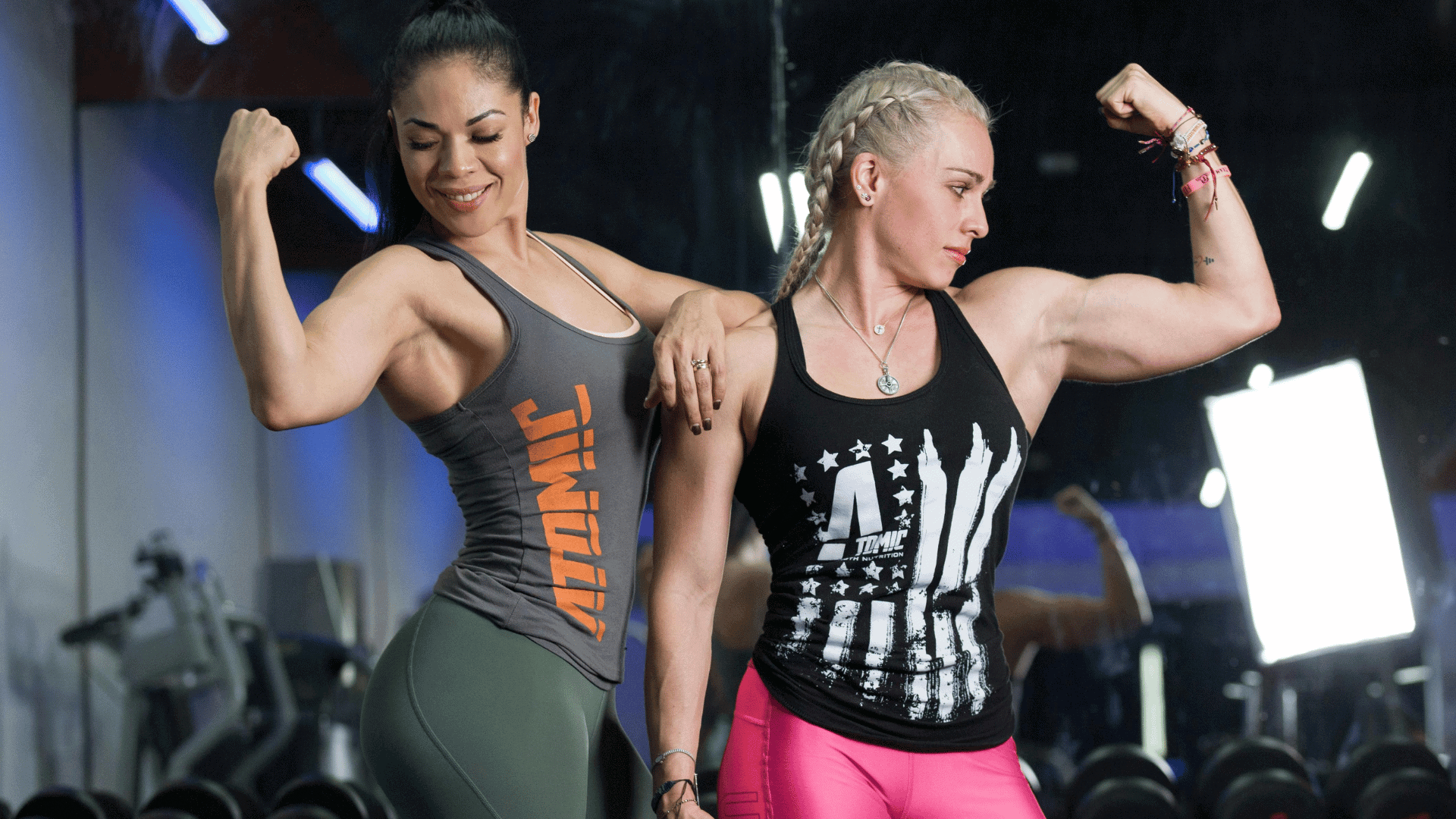Some workout plans are made for everyone and end up working for no one.
It’s because others ignore the goals most women care about: building shape, losing fat, and feeling strong without spending hours in the gym.
This gym workout plan is different. It’s made specifically for women where you’ll train five days a week with a mix of strength training, cardio, and focused core work.
The moves are designed to grow your glutes, define your legs and arms, and tighten your waist without bulking up.
Each week follows the same rhythm, but the plan builds month after month. As you get stronger, the workouts evolve to keep your body changing.
In this blog post, you’ll get a full breakdown of a 12-week gym workout plan for women, complete with daily workouts, tips to progress, and the structure to keep going.
Why This Gym Workout Plan Works for Women
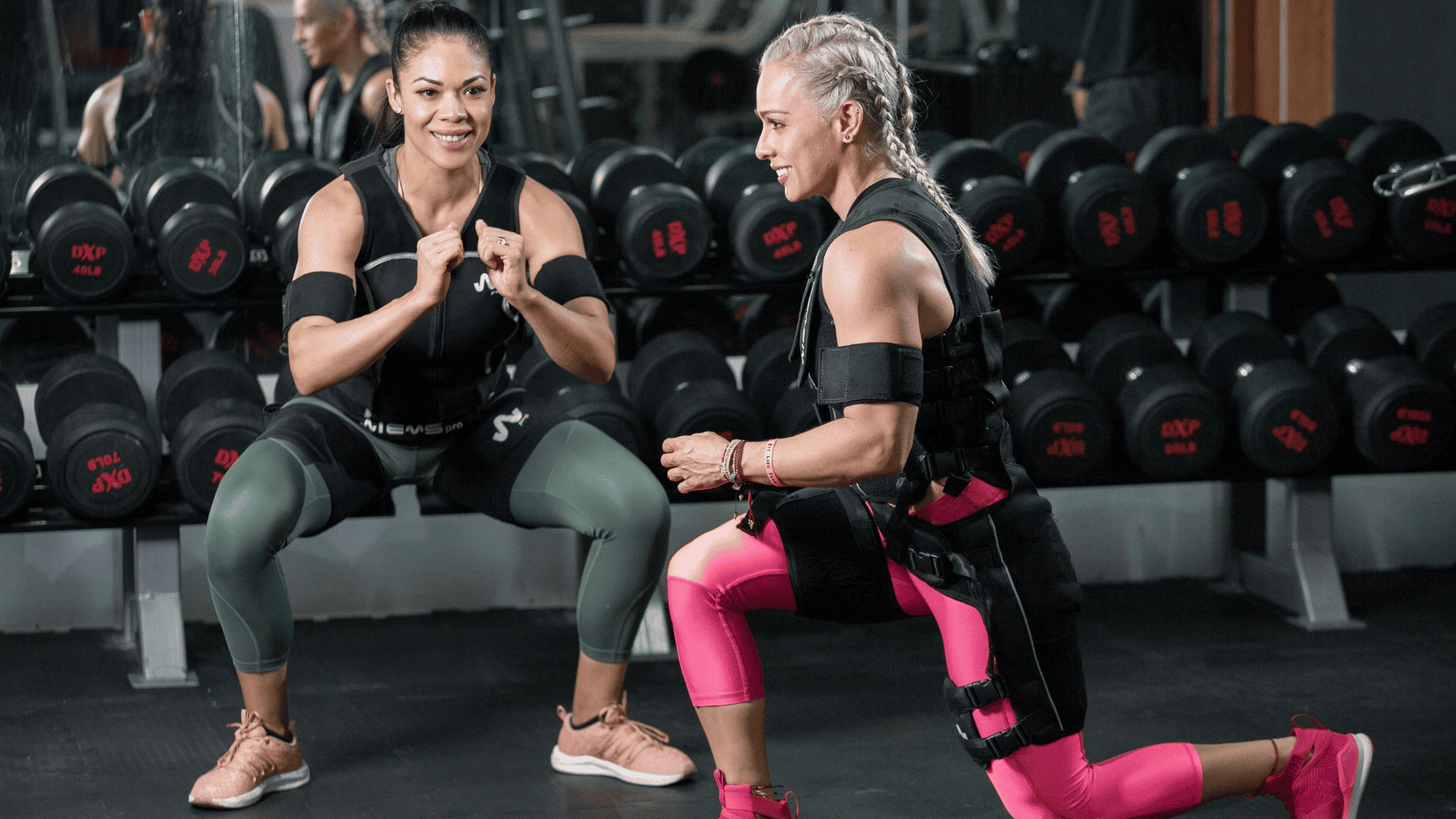
A lot of programs are built around general goals. (burn fat, lift heavy, get fit)
But this one is designed for women who want more than that. It helps you shape your body in a way that feels strong and confident, not overworked or overtrained.
Instead of doing a little bit of everything, each training day has a clear purpose. You’ll train five days a week, rotating between lower body, upper body, cardio, and core.
The workouts are shaped to help you build curves where you want them (especially in the glutes and legs) while keeping your waist tight and your arms toned.
On top of that, the plan includes one day of cardio-based HIIT and another day for core and mobility. This keeps your heart rate up, supports fat loss, and gives your muscles time to recover between heavy lifts.
What makes it even more effective is the month-to-month progression. While the weekly schedule stays the same, the intensity gradually increases.
That way, you get stronger without burning out and your body keeps changing.
Your 12-Week Gym Workout Plan Shape-Up Map
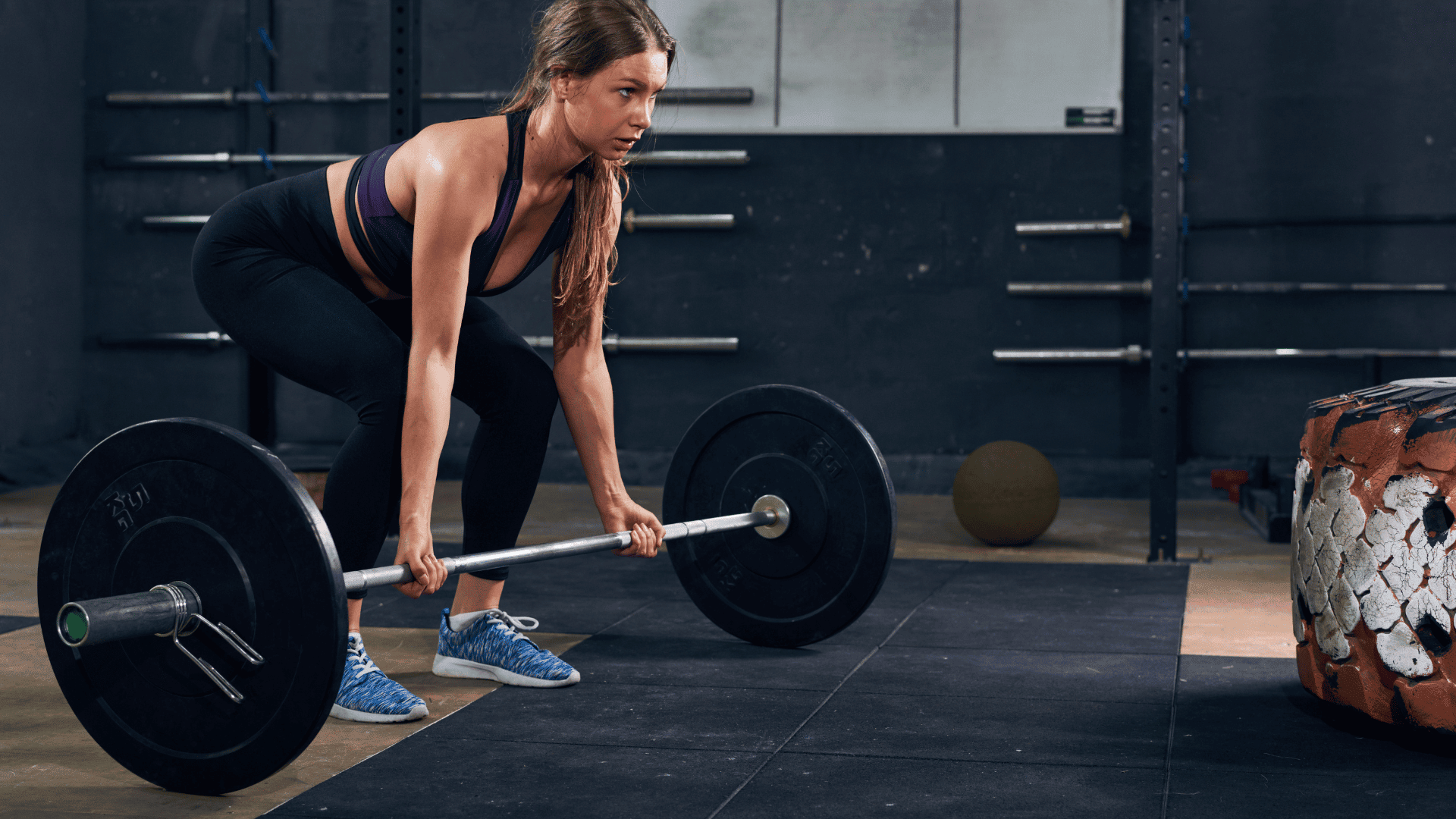
This gym workout plan follows the same weekly rhythm for all 12 weeks—but what changes is the intensity.
You’ll start by learning the moves, then gradually increase the weight, sets, or pace each month. That way, your body keeps improving without feeling overwhelmed.
Month-by-Month Progression
Month 1 – Learn the Moves
Start with moderate weights and get comfortable with form. This month is about building a strong foundation. Use standard rep ranges and focus on consistency.
Month 2 – Step It Up
Now it’s time to push a little harder. You can increase the weight or add one more set to your main lifts. The structure stays the same, but your effort goes up.
Month 3 – Finish Strong
To maximize results, Month 3 introduces supersets (doing two moves back-to-back) and drop sets (lowering weight mid-set). You’ll also add intensity to cardio days by increasing time or shortening rest.
Weekly Breakdown (Workouts by Day)
Here’s what each week looks like:
| Day | Focus | What You’ll Do |
| Monday | Lower Body + Core | Squats, Lunges, Glutes, Hamstrings, Calves, Abs |
| Tuesday | Cardio & HIIT | Treadmill/Elliptical + Bodyweight Circuits |
| Wednesday | Upper Body Sculpt | Chest, Back, Shoulders, Arms |
| Thursday | Lower Body (Glute Focus) | Deadlifts, Hip Thrusts, Cable Work, Calves |
| Friday | Core & Mobility | Pilates-style Abs, Stretching, Recovery Drills |
| Saturday | Rest | Optional walk or yoga |
| Sunday | Rest | Full recovery |
Monday — Lower Body & Core
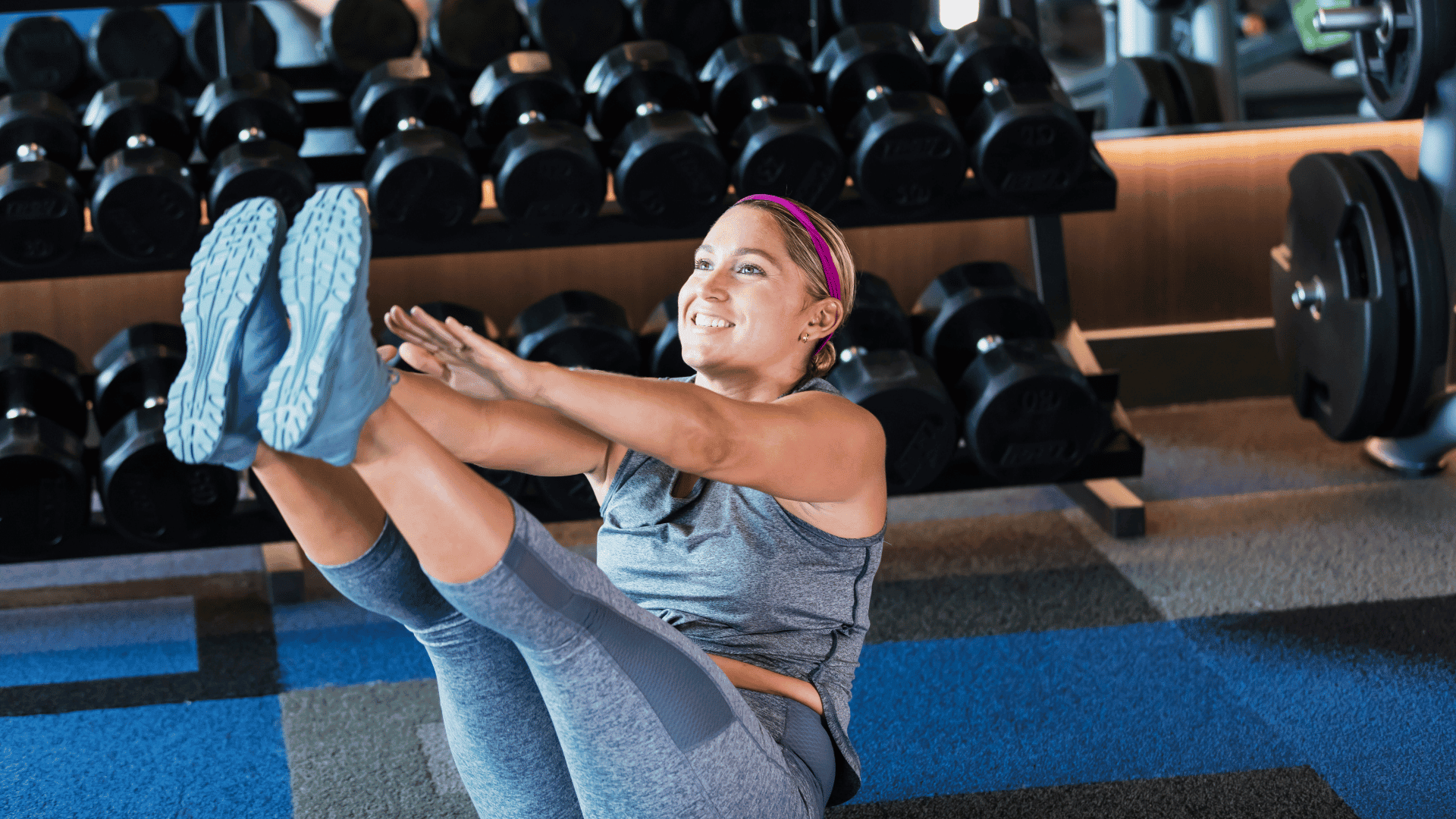
This workout builds strength in your legs and glutes while tightening your core. Go steady, focus on form, and don’t rush between reps.
- Barbell Squat – Stand with the bar resting on your upper back. Keep your chest up and lower down like you’re sitting in a chair. Push through your heels to return to standing. (4 sets × 12 reps)
- Walking Lunges – Step forward with one leg, lower until both knees are bent at 90°, then push back up and switch legs. (3 sets × 12 reps per leg)
- Glute Bridge – Lie on your back, knees bent. Lift your hips toward the ceiling, squeeze your glutes, then lower. (3 sets × 12 reps)
- Hamstring Curl (machine) – Sit or lie on the machine. Curl your heels toward your glutes, pause, then lower slowly. (3 sets × 12 reps)
- Standing Calf Raise – Stand tall, push up through your toes, pause at the top, then lower your heels. (3 sets × 12 reps)
- V-Sit-Up – Sit on the floor, lift both legs and arms off the ground, then crunch inward. (3 sets × 15 reps)
- Basic Crunch – Lie down with knees bent and hands behind your head. Lift your shoulders slightly, then lower. (3 sets × 15 reps)
Tuesday — Cardio & HIIT

This is your fat-burning day. Start with steady cardio, then move into bodyweight circuits that boost your heart rate and tone your lower body.
- Cardio Warm-Up – Walk, jog, or use the elliptical for a steady 15 minutes. (Moderate pace)
- Jump Squats – Lower into a squat, then explode upward into a jump. Land softly and repeat. (3 sets × 1 minute)
- Lateral Squat Walks – Step side-to-side in a low squat position to engage your outer thighs. (3 sets × 1 minute)
- Bench Step-Ups – Step up onto a bench or sturdy platform, alternating legs. Keep your core tight. (3 sets × 1 minute)
- Jumping Jacks – Jump your legs out while raising your arms overhead. Stay light on your feet. (3 sets × 1 minute)
- Skaters – Leap side to side, landing on one foot at a time. This targets your glutes and thighs. (3 sets × 1 minute)
Wednesday — Upper Body Sculpt

This day builds lean muscle in your arms, shoulders, and back—without bulking up. Use a weight that challenges you while keeping form clean.
- Bench Press – Lie flat, grip the bar just outside shoulder-width. Lower to your chest, then press back up. (3 sets × 12 reps)
- Push-Ups – Hands under shoulders, body in a straight line. Lower chest to the floor, then push back up. Modify on knees if needed. (3 sets × as many reps as possible)
- Bent-Over Row – Hold dumbbells or a bar, bend at your hips, pull toward your waist. Keep elbows close. (4 sets × 10 reps)
- Lat Pulldown – Grab the wide bar on the machine, pull it to your chest, then slowly release. (4 sets × 12 reps)
- Dumbbell Shoulder Press – Sit or stand. Press dumbbells from shoulder height to overhead, then lower. (3 sets × 12 reps)
- Biceps Curl – Keep elbows tight to your sides as you lift the dumbbells toward your shoulders. (2 sets × 12 reps)
- Triceps Dip – Use parallel bars or a bench. Lower your body down, then press up using your triceps. (2 sets × 12 reps)
Thursday — Lower Body (Glute Focus)
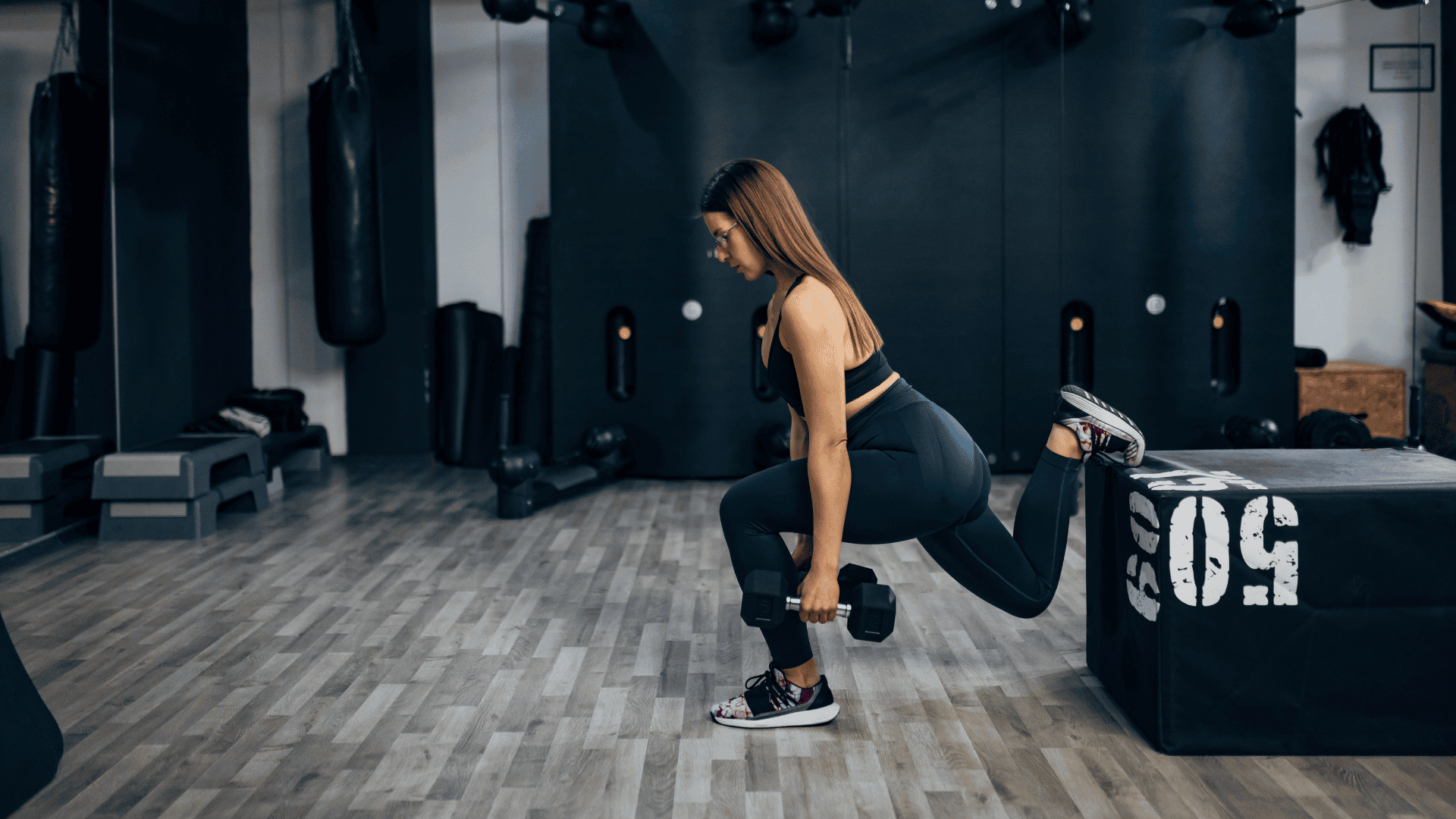
This workout targets your glutes from every angle using different movement styles. Stay controlled, and don’t rush the reps.
- Romanian Deadlift – Hold dumbbells in front of you, keep legs mostly straight, and hinge at the hips. Lower until you feel a hamstring stretch, then return to standing. (3 sets × 10 reps)
- Hip Thrust – Sit against a bench with a barbell on your hips. Push through your heels to lift, squeeze at the top, then lower. (4 sets × 12 reps)
- Cable Kickback – Strap one ankle into the cable. Push your leg back and up, then return with control. (3 sets × 15 reps per leg)
- Sumo Squat – Take a wide stance, toes pointed out. Lower your hips straight down, then push back up. (3 sets × 12 reps)
- Bulgarian Split Squat – Place one foot behind you on a bench, then lower the other into a lunge. Switch legs after each set. (3 sets × 10 reps per leg)
- Seated Calf Raise – Sit with the pad on your thighs. Raise your heels, pause at the top, then lower. (3 sets × 15 reps)
Friday — Core & Mobility
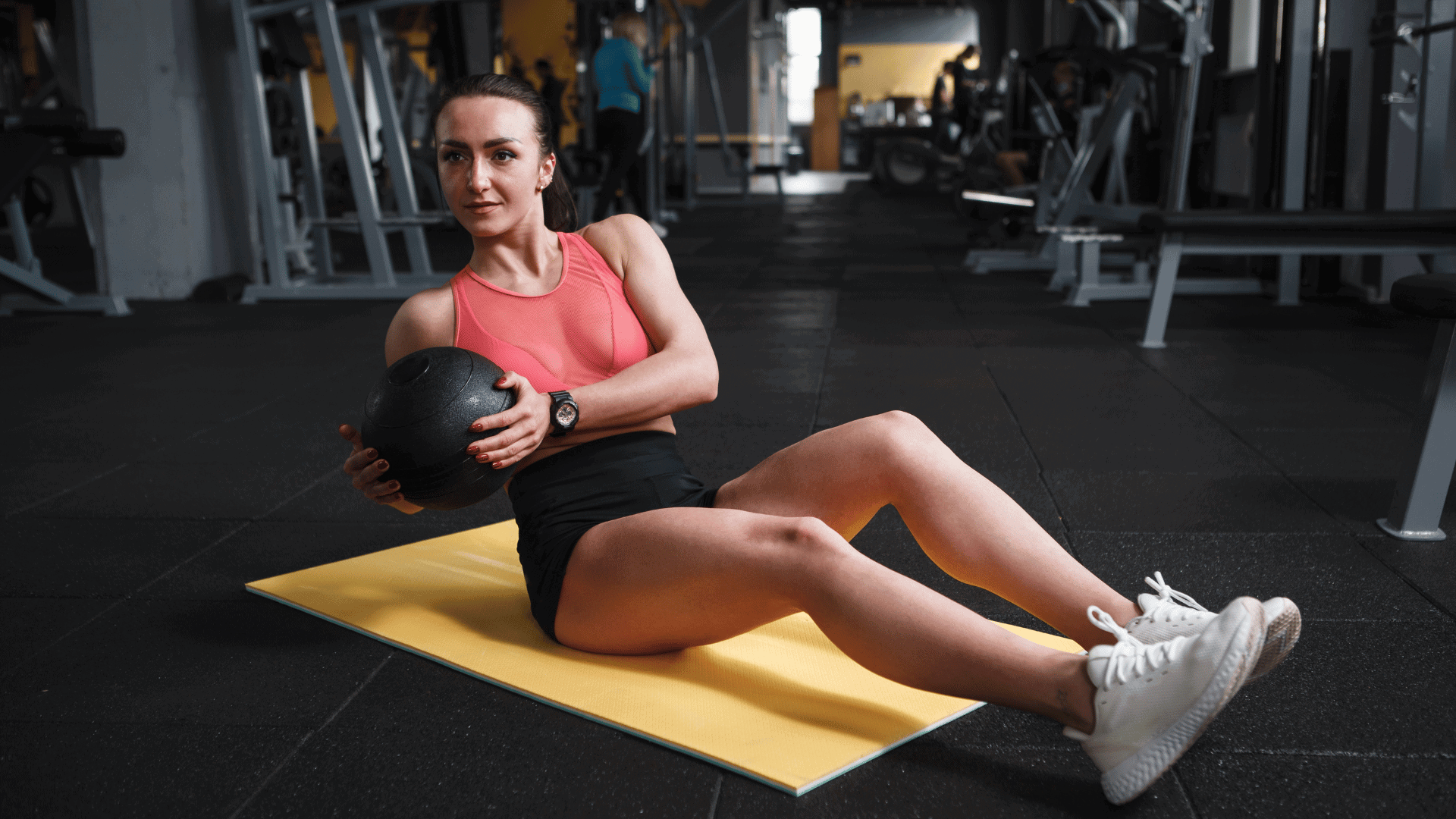
End the week with a focus on your abs and recovery. This day helps tighten your waist, improve posture, and prevent soreness going into the weekend.
- Plank – Elbows under shoulders, body straight. Hold steady. (3 sets × 45 seconds)
- Hanging Leg Raise – Hang from a bar and lift your legs up to 90°. Keep your core tight. (3 sets × 12 reps)
- Russian Twist – Sit with feet lifted, twist a weight side to side. (3 sets × 20 total reps)
- Bird-Dog – On all fours, extend opposite arm and leg, then switch sides. (3 sets × 12 reps per side)
- Stretch + Foam Roll – Spend time stretching hamstrings, quads, glutes, and upper back. Use a foam roller on sore spots. (5–10 minutes)
How to Keep Progress Steady

Progress doesn’t come from changing everything every week. It comes from doing the same things—just a little better each time.
As you get stronger, increase the weight slowly once you can complete all sets at the top of the rep range with good form.
For HIIT days, you can cut down the rest time between moves or add an extra round to challenge your endurance.
In Month 3, start pairing lower body exercises into supersets (two moves done back-to-back) for more intensity. If you start to feel worn down by Week 6, take a light weekend to reset.
Lower your weight and cut sets in half for a few sessions, then jump back in strong the next week.
The plan is already built to work. Your job is just to keep showing up and pushing yourself one step at a time.
Eating That Supports the Work You’re Doing

The way you eat should match the way you train. You’re showing up, lifting weights, pushing through circuits—it makes sense to give your body the kind of fuel that helps it respond.
Instead of tracking everything or cutting entire food groups, focus on a few simple targets:
1. Get enough protein.
Muscle needs it to grow and stay firm. A solid range is 0.8 to 1 gram per pound of body weight. That might sound like a lot, but it adds up fast when you include eggs, chicken, tofu, cottage cheese, or a scoop of protein powder with a shake or smoothie.
2. Eat carbs where they count.
Before and after workouts, carbs give you energy and help your muscles recover. Try rice, fruit, oatmeal, or potatoes—simple stuff that digests well and keeps you going.
3. Don’t skip healthy fats.
Fats help with hormone balance and keep you full. Add things like olive oil, nut butter, avocado, or flax seeds to meals in small amounts.
4. Hydrate yourself.
You don’t need fancy formulas. Just aim for half a gallon of water per day, and more if you’re sweating a lot.
Eating this way gives your body the support it needs without turning every meal into a math problem.
Recovery Rules That Can Help You Keep Going

Hard workouts don’t mean much without recovery. Muscles need rest to grow, and your body needs time to bounce back.
If you keep pushing without a break, progress slows and soreness lingers.
That’s why this plan builds in rest days—and why recovery habits matter just as much as your workouts.
- Sleep comes first: Aim for 7 to 8 hours a night. That’s when your body does most of its rebuilding.
- Use your rest days wisely: You don’t have to be totally still. A short walk, stretching session, or light yoga can help ease tight muscles and boost blood flow.
- Slow down when your body asks: If your energy crashes mid-week or soreness sticks around longer than usual, it’s okay to pull back. Drop your weights slightly or take an extra rest day.
Recovery isn’t slacking, it’s how you stay strong for the long run.
When Equipment Isn’t There, Here’s What to Do
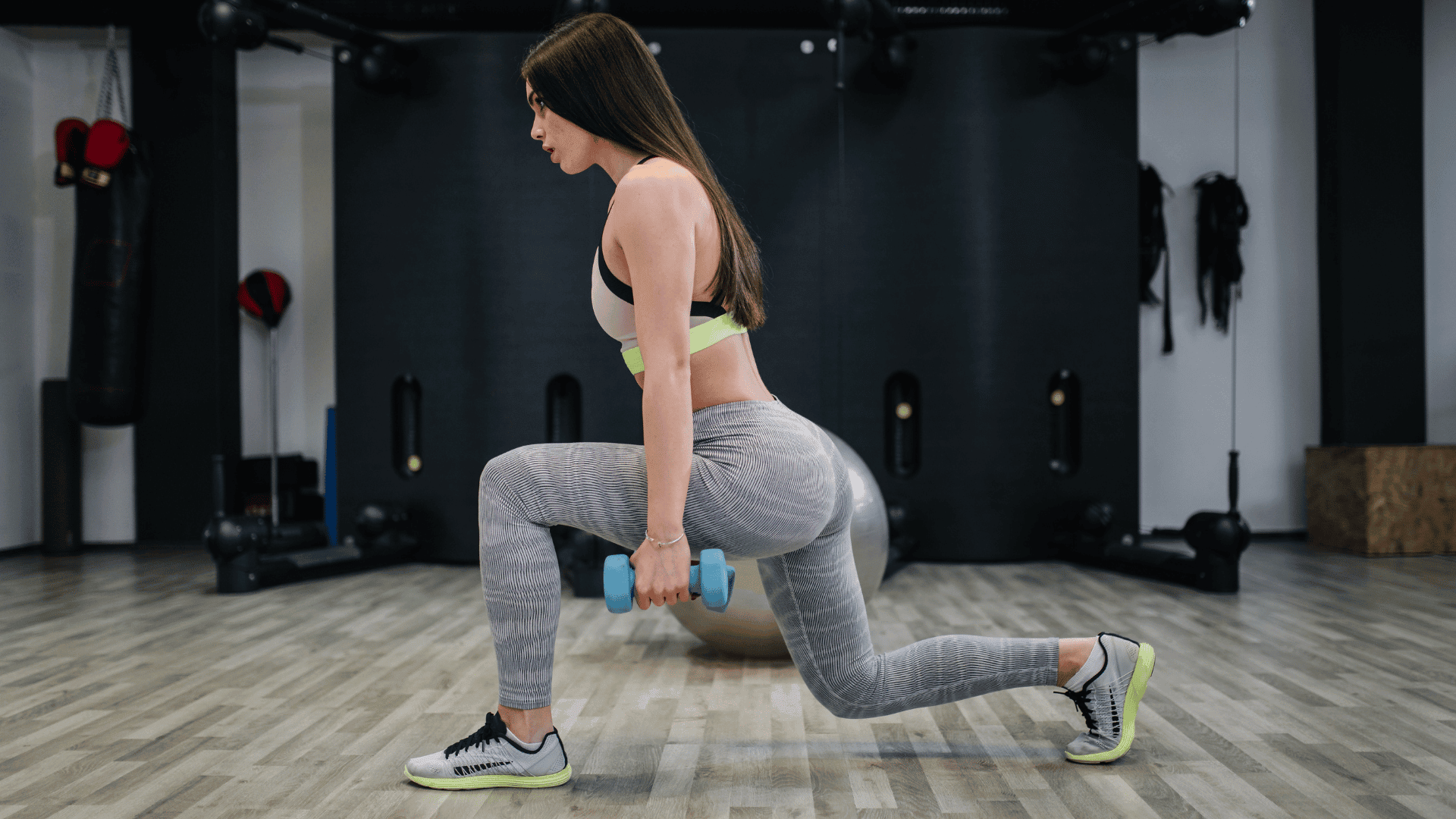
Some days you’ll walk into the gym and find every squat rack taken. Other times, you’re at home trying to make do with whatever you’ve got.
That’s normal, and it doesn’t mean you can’t train.
If you planned to do hip thrusts but can’t find a bench, grab a mat and do glute bridges from the floor.
No leg curl machine? Swap in stability ball hamstring curls or slow bodyweight good mornings.
Barbells not available? Switch to single-leg dumbbell exercises like Bulgarian split squats or step-ups.
These still hit your legs and glutes, and often feel harder.
Cable machines busy?
Loop a long resistance band around a pole or heavy object for banded kickbacks, rows, or pull-aparts. They take up no space and still challenge the muscle.
Even a staircase or low step can turn into your training tool for calf raises or step-ups when needed.
You don’t need perfect equipment to train well, just the right move for the moment.
Ready to Commit to This Gym Workout Plan for Women?
This plan isn’t just about looking fit, it’s about becoming stronger, more confident, and more consistent.
You’re training five days a week, working every major muscle, and giving your body the recovery it needs to change.
It’s built to help you stick with it, even if you’re new to the gym or coming back after a break. Each week follows a pattern, each month builds on the last, and every workout is there to shape your body the way you want.
Start this Monday. Track your weights, take progress pictures, and see how much stronger you feel by week 4. By week 12, you’ll notice the difference not just in how you look, but how you move and carry yourself.
You don’t need more research or another plan to compare.
YOU just need to start and stay consistent.
Free Resource to Guide Your Next Steps

Walking into the gym without a plan often means wasted time, guessing at machines, or leaving without the progress you hoped for.
To make it easier, you can grab the Free Weekly Gym Workout Plan for Women.
Inside, you’ll find a ready-to-use schedule designed specifically for women who want clear direction, efficient workouts, and the confidence to train with purpose.
Instead of wandering from exercise to exercise, you’ll follow a proven path that keeps you focused and moving forward every single week.
Frequently Asked Questions
1. Is it okay to change the workout days to fit my schedule?
Yes. You can move the workouts around the week as needed, as long as you keep your two rest days and avoid stacking intense sessions back-to-back.
2. Can I do this plan with a friend who has different goals?
Absolutely. The structure works for fat loss, strength, or muscle tone—your food choices and weight selections can adjust based on each of your goals.
3. What should I do if a machine or piece of equipment isn’t available?
Use one of the alternatives listed in the “When Equipment Isn’t There” section. You’ll still hit the same muscles and stay on track.
4. Do I need to track my food or count calories?
Not required—but helpful. Even basic tracking for a few weeks can teach you a lot about portions, protein, and how food supports your workouts.
5. Can I repeat this program after the 12 weeks?
Yes. You can repeat it by increasing weights, reps, or swapping in a few new moves. Many women run it again with more focus or heavier lifts the second time.
